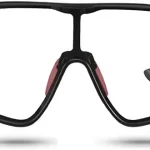Selecting the right cycling sunglasses lens color for the conditions is key to protecting your eyes and seeing the trail clearly while mountain biking. The ideal lenses filter out glare without distorting colors or reducing contrast. This allows you to spot obstacles and features on the path ahead. In this article, we’ll explore how lens tint impacts vision in various light conditions. We’ll also cover lens technologies, UV protection, and proper sunglass care to help you choose the best mountain biking eyewear. With the right lenses, you can ride safely and comfortably on any terrain.
Bright Sunlight Calls for Darker Lenses
Riding under bright sunlight demands lenses that significantly reduce glare and UV exposure. Dark tints like black, gray, brown or mirrored coatings are ideal for very sunny conditions. These block the most light while still allowing you to see the trail ahead clearly. Lenses with 10-30% visible light transmission (VLT) cut through intense rays while maintaining good visibility.
Within the dark lens category, different tints fine-tune vision for certain trails. Brown and amber lenses boost terrain contours and work well on flatter or heavy shade trails. Gray lenses take a more neutral approach for versatile performance across different settings. Green or blue mirrored coatings also enhance contrast across various sunny terrains.
Testing lenses in different dark hues will help you find the ideal match for maximizing contrast and visibility while blocking glare. Quality cycling sunglasses often offer interchangeable lenses so you can switch tints for different rides.
Lighter Lenses for Changing Conditions
Partly sunny days call for lenses in the 40-60% VLT range. These medium tints reduce glare while allowing enough light through for variable conditions. Versatile options like yellow, rose, purple, or orange adapt well as lighting shifts.
Yellow lens tints are excellent for partly cloudy days. They heighten contrast by cutting through haze and diffusing light. Yellow also boosts depth perception, helping gauge distances on the trail. Photochromic yellow lenses automatically darken in sunlight for convenience.
Subtle rose or purple tints also perform well in changing light. By increasing contrast and depth perception, these hues sharpen trail details without overly darkening your view. Their modest tinting balances glare cutting with light transmission.
Clear or Light Lenses for Overcast Days
Overcast skies or shaded forests require the lightest tints to allow sufficient light through. Lenses transmitting 60-90% visible light work best on darker days. Clear lenses with no tint let the most light in, providing crisp vision without color distortion, which is ideal for heavily overcast days or night riding.
For a touch of glare protection during low light rides, pale yellow, rose, or amber lenses in the 60-80% VLT range are a great choice. Their subtle tint reduces eyestrain while maintaining excellent visibility under cloudy conditions. Just note that lighter lenses don’t block UV light as effectively as darker options.
After Dark: Clear for Night Riding
Once the sunlight disappears, transparent clear or yellow lenses in the 80-100% VLT range become critical for visibility. Clear lenses are best for night mountain biking, maximizing light transmission for after-dark trails. With crisp vision, you can better identify hazards and pick lines in the darkness. Clear lenses also heighten available light and contrast, amplifying terrain details.
Light yellow lenses around 90% VLT reduce minimal glare from stray light sources without hampering visibility after dusk. For any night riding, the brightest clear or yellow tints are a must.
Lens Technologies Enhance Vision
Beyond basic tinting, specialized lens technologies also fine-tune vision for cycling. While not mandatory, these added enhancements can optimize eyewear performance if they fit your riding style and budget.
Photochromic or transitional lenses automatically adjust their darkness in response to light conditions. This eliminates the need to switch out lenses as sunlight shifts throughout your ride. Meanwhile, polarized lenses fight problematic reflected and horizontal glare.
Premium lens technologies like Oakley Prizm also boost color and detail in specific environments like road or trail settings. Evaluate your riding needs to decide if these extras warrant the investment over more budget-friendly sunglasses.
Shielding Your Eyes with UV Protection
Along with tint and visibility, UV protection is a key lens consideration. Overexposure to UVA and UVB rays can lead to eye damage and raise long-term risks. When selecting sunglasses, always verify lenses block 100% of UV radiation up to 400 nm.
UVA/UVB protection is essential in all lenses, especially lighter tints used for variable conditions that don’t inherently block UV light. Check for a UV400 rating or confirmation of complete sun ray protection from the manufacturer.
With proper UV blocking, cycling sunglasses safeguard your eyes against glare, damage, and harmful ultraviolet radiation. Make sure any lenses you use factor in UV protection with tinting and visibility needs.
Benefits of Clear Lenses for Cycling
In addition to their popularity for night riding, clear cycling lenses offer advantages any time of day. Unlike traditional sunglasses designed to simply block out sunlight, clear lenses take a specialized approach.
By allowing maximal light transmission, clear lenses maintain true color perception and sharpen contrast. This improved depth and terrain perception helps riders pick out obstacles, particularly in low light forests. Clear lenses also minimize eye fatigue in any condition.
For mountain biking, unobstructed vision can enhance safety by allowing you to identify loose terrain and other hazards well in advance. Clear lenses also help scale changes feel steadier and less jarring. Plus, their fog resistant design keeps your view unobscured.
So don’t reserve clear lenses just for night rides. Consider adding clear or slightly tinted lenses to sunglass rotation for clearer vision and fatigue reduction anytime.
Use Polarization Appropriately
Unlike with UV protection, polarization is not a universal need when choosing lenses. While polarized lenses cut problematic reflected glare, they can distort sloped terrain perception. Under certain angles, polarization can also darken or hide puddle reflections that highlight hazards.
These potential trail visibility issues mean polarization offers less universal benefits for mountain biking. However, polarized lenses can still aid road cycling by filtering out glare from wet pavement without terrain drawbacks.
Consider if the glare reduction outweighs potential visualization impacts based on your specific cycling disciplines and conditions. You can gain some glare protection through darker non-polarized lenses. Determine if polarization’s added cost justifies the benefits for your needs.
Caring for Your Lenses
To maintain peak lens performance and extend their lifespan, proper sunglass cleaning and care are essential. Always store glasses in a hard case or provided pouch when not in use. This protects the lenses from scratches during transport and storage.
For cleaning, utilize a spray and soft microfiber cloth formulated specifically for lenses. Avoid using paper towels or tissues which can scratch the surface. Start by blowing off any loose particles. Apply the cleaner to the cloth, then gently wipe down lenses. Make sure to dry fully before using to prevent fluids seeping under the frames.
You can also use soapy water and a gentle touch to clean lenses in a pinch. Repeat cleaning as needed to remove stubborn residue or grease from handling. Handle your shades carefully to prevent scratches in the first place.
With proper care, your lenses will retain their clarity and performance. Pay special attention to cleaning if swapping out multiple sets of lenses to avoid cross-contamination.
Watch for Fogging
Along with scratches, fogging is a key frustration that can ruin your sunglass experience. Fog forms when temperature differences cause the inside of the lens to reach its dew point. Stopping lenses from fogging starts with glasses featuring ventilation to allow air movement.
You can also apply specialty anti-fogging sprays or wipes before rides. Allow these coatings to fully dry to assure they don’t cause blurring instead. Wiping your face before putting on glasses prevents excess moisture build-up.
Quick fog clearing solutions include popping out the lenses and wiping them or rinsing the inside with cool water. Finding shades with effective airflow and applying anti-fog coatings as needed will provide the clearest riding view.
Finding the Right Fit
Beyond lens color and options, achieving a proper fit is imperative for maximizing both comfort and safety. Verify frames sit flush against your face without pressing into your nose or temples. This prevents light leakage while ensuring the glasses don’t shift out of place while riding.
Adjustable nose pads and temple arms to customize the angle and snugness help achieve the ideal fit. You want sunglasses to be secure and stable without feeling tight or restrictive. Trying on different sizes and frame shapes is the best way to find your perfect match.
Durability is also key – look for sturdy yet flexible frames constructed from high quality materials like Grilamid or nylon. This ensures they can handle bumps and drops while riding without breaking. The right fit, design, and build provides glasses tailored to your trails.
Prioritizing Features Based on Needs
With so many lens tints and added options to factor in, prioritizing the features that match your needs and riding style makes the selection process easier. Consider when and where you ride most regularly – are bright, sunny rides or low light forests more common? This narrows suitable lens tints.
Determine must-have categories like 100% UV protection, then decide which extra lens technologies fit your budget. Do you value enhanced terrain perception through specialized lenses or photochromic convenience more? Rank benefits against costs to strike the right balance.
Finding affordable, quality sunglasses can maximize value. But don’t sacrifice essential vision and protection – cheap cycling sunglasses meeting all your needs do exist. Identify the features that matter most and use them to guide your selection.
Recapping Key Factors
To select ideal mountain biking sunglasses, consider these key factors:
- Lens tint and VLT – match to expected light conditions
- UV protection – critical for all lenses
- Polarization – optional, assess terrain impact
- Specialized lens enhancements – weigh benefits vs. cost
- Frame fit, comfort, and stability
- Durability and impact resistance
- Fog prevention and easy lens cleaning
- Affordability for value sunglasses still meeting needs
Keep these elements in mind as you shop to find the eyewear perfect for maximizing your cycling performance, safety, and enjoyment on every ride.
The Right Lenses Bring the Trail into Focus
Equipping your shades with lenses tailored for your local conditions and riding needs is crucial. Optimize visibility, contrast, and protection from glare and UV rays based on when and where you ride most. Seek out specialty lens technologies if beneficial and affordable. With the right sunglasses, you’ll enjoy sharper vision, safety, and comfort on every mountain biking adventure. Use these tips to find your ideal match and ride on!






